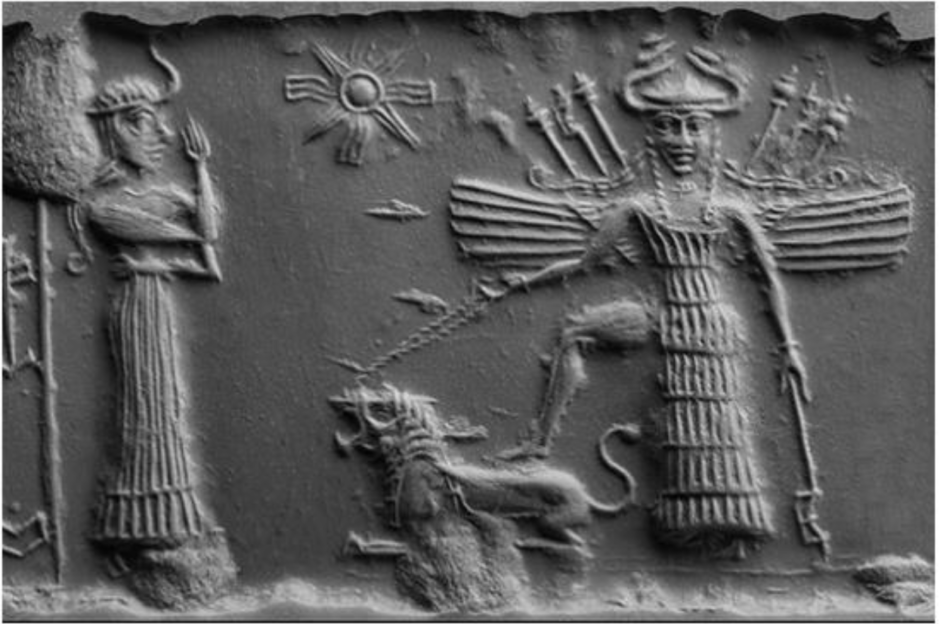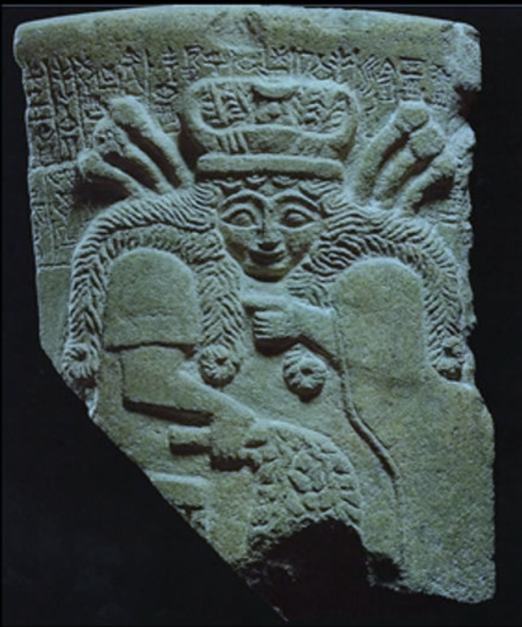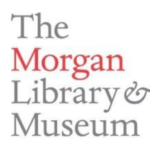THE MORGAN LIBRARY & MUSEUM
~~~~~~~~~~~~~~~~~~~~~~~~~~~~~~~~~
The Morgan Gives a First-Time Look inside the
World of Enheduanna and Women of Mesopotamia
She Who Wrote: Enheduanna and Women of Mesopotamia, ca. 3400-2000 B.C
October 14, 2022 through February 19, 2023
~~~~~~~~~~~~~~~~~~~~~~~~~
New York, NY (July 20, 2022) – The Morgan Library & Museum proudly presents She Who Wrote: Enheduanna and Women of Mesopotamia, ca. 3400-2000 B.C opening October 14, 2022, and running through February 19, 2023. The exhibition brings together for the first time a comprehensive selection of artworks that capture the rich and shifting expressions of women’s lives in ancient Mesopotamia during the late fourth and third millennia BC. It centers on the high priestess and poet Enheduanna (ca. 2300 BC), the world’s first author known by name, who wielded considerable religious and political power. Displaying a spectacular collection of her texts alongside other works made circa 3400–2000 BC, She Who Wrote celebrates Enheduanna’s poetry and her legacy as an author, priestess, and woman while bearing testament to women’s diverse roles in religious, social, economic, and political contexts—as goddesses, priestesses, worshippers, mothers, workers, and rulers.
—————-

Fragment of a vessel with frontal image of goddess, Mesopotamia, Sumerian Early Dynastic IIIb period, ca. 2400 BC. Cuneiform inscription in Sumerian basalt, 9 7/8 × 7 5/16 × 1 9/16 in. (25.1 × 18.6 × 4 cm). Staatliche Museen zu Berlin, Vorderasiatisches Museum; VA 07248, acquired in 1914–15.
—————-
Enheduanna received her name, which means in Sumerian “high priestess, ornament of heaven”, upon her appointment to the temple of the moon god in Ur, a city in southern Mesopotamia, in present-day Iraq. The daughter of the Akkadian king Sargon (ca. 2334–2279 BC), Enheduanna left an indelible mark on the world of literature by composing extraordinary works in Sumerian. Her poetry reflected her devotion to the goddess of sexual love and warfare—Inanna in Sumerian, Ishtar in Akkadian. Whereas much of ancient Mesopotamian literature is unattributed, Enheduanna introduced herself by name and included autobiographical details in several poems. Her passionate voice had a lasting impact in Mesopotamia, as her writings continued to be copied in scribal schools for centuries after she died.
In addition to texts by Enheduanna, She Who Wrote: Enheduanna and Women of Mesopotamia, ca. 3400- 2000 B.C includes works referencing her name and image, as well as representations of women from the earliest Mesopotamian cities. These examples represent painstaking artistry and stylistic variety, often combining a delicate naturalism with expressive stylization. These works of art have withstood millennia, lending us insight into an often-overlooked aspect of an ancient patriarchal society: womanhood.
Highlights in the exhibition include Fragment of a vessel with frontal image of goddess from the Early Dynastic IIIb period (ca. 2400 BC). This vessel fragment shows one of the first images of an anthropomorphic goddess created in Mesopotamia. The divine nature of the figure is expressed by the horned crown with feathers (or fronds) and an animal head, as well as by the vegetal elements above her shoulders. The goddess stares directly at the viewer, exuding power and authority. Her voluminous hair and the cluster of dates in her right hand depict her as a deity of fertility and abundance.
—————-

Cylinder seal (modern impression) with goddesses Ninishkun and Ishtar, Mesopotamia, Akkadian, Akkadian period (ca. 2334–2154 BC), Cuneiform inscription: To the deity Niniškun, Ilaknuid, [seal]-cutter, presented (this), Limestone. The Oriental Institute of the University of Chicago, acquired 1947; A27903.
—————-
Also included is Queen Puabi’s funerary ensemble, found during the excavation of her tomb in 1927. The ensemble is a feast for the eyes, with its vibrant colors, precious materials, and skilled artisanship. Several wreaths formed of floral and vegetal motifs rested on Puabi’s forehead, with ribbons of thinly hammered gold circling her voluminous hair and gold coils framing her face. At the crown of her head sits a large gold comb, featuring seven delicately curving flowers; large lunate earrings dangled from her ears. A choker with a central rosette sits against her neck, and a profusion of carnelian, lapis lazuli, and gold beads covers her chest, strung in rhythmic patterns. Finally, a belt of beads with a fringe of disks rests against Puabi’s hips.
The exhibition also includes the Disk of Enheduanna from the Akkadian period, ca. 2300 BC. The partially preserved inscription on one side of this disk was recovered from a copy on an Old Babylonian (ca. 1894–1595 BC) tablet, recorded hundreds of years after the disk’s dedication by Enheduanna. The scene carved on the opposite side shows an open-air sacred precinct with a multistory edifice at left. Enheduanna occupies the center, depicted slightly larger than her attendants to reflect her status. Two priests behind her carry ritual paraphernalia; the one in front of her pours a libation on an altar. Enheduanna wears a tiered, flounced garment and a headdress in the form of a circlet, both of which became canonical for her successors.
——————
The Morgan’s Director, Colin B. Bailey, said, “After unavoidable delays due to the pandemic, we are delighted to be cooperating with colleagues from museums around the world, who have remained steadfast in their commitment to assist the Morgan in presenting this groundbreaking exhibition. Enheduanna’s legacy is multifaceted, and the Morgan is honored to present her story to a new generation of visitors.”
The exhibition is curated by Sidney Babcock, Jeannette and Jonathan Rosen Curator and Department Head of Ancient Western Asian Seals and Tablets at the Morgan and co-curated by Erhan Tamur, Curatorial Research Associate for the Department. Babcock said, “Enheduanna is nothing less than the first known author in history. That she is not better known is something this exhibition hopes to remedy. The images of women from this period, presented here for the first time as a group, have often been overlooked. It is time to take a closer look at the extraordinary artistry of these images, as well as the way in which they reflect the contributions of women at the beginning of history. Preparing for this exhibition during the pandemic has been a challenge. I am deeply grateful to my colleagues at the Morgan and at the many national and international lending institutions for their enthusiastic support for this groundbreaking effort.”
——————
An array of engaging public programs will accompany the exhibition, including scholarly talks; a theatrical reading with live music; gallery tours and talks for adults and school children; and the family workshop “Signed, Sealed, Delivered: Cylinder Seal Family Workshop.” A Family Guide will be available onsite and online.
For addition information and updates visit: themorgan.org/programs.
———————
She Who Wrote: Enheduanna and Women of Mesopotamia, ca. 3400-2000 B.C.
October 14, 2022 through February 19, 2023 The Morgan Library & Museum
225 Madison Avenue at 36th Street
New York, NY 10016
——————
Organization and Sponsorship
She Who Wrote: Enheduanna and Women of Mesopotamia, ca. 3400-2000 B.C. is made possible through the generosity of Jeannette and Jonathan Rosen.
Additional support is provided by Becky and Tom Fruin, Laurie and David Ying, and by a gift in memory of Max Elghanayan, with assistance from Lauren Belfer and Michael Marissen, and from anonymous donors.
~~~~~~~~~~~~~~~~~~~~~~~~

A museum and independent research library located in the heart of New York City, the Morgan Library & Museum began as the personal library of financier, collector, and cultural benefactor Pierpont Morgan. The Morgan offers visitors close encounters with great works of human accomplishment in a setting treasured for its intimate scale and historic significance. Its collection of manuscripts, rare books, music, drawings, and works of art comprises a unique and dynamic record of civilization, as well as an incomparable repository of ideas and of the creative process from 4000 BC to the present.
The Morgan Library & Museum | 225 Madison Avenue | 212.685.0008 | themorgan.org
——————–
Visit: AAQ / Museum Architecture — The Morgan Library & Museum, NYC / 2006
——————–
==============================================

AAQ / Resource: Ben Krupinski Builder
_____________________________________________________________
